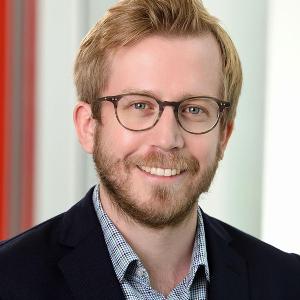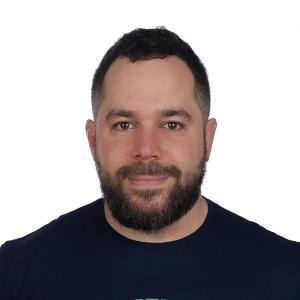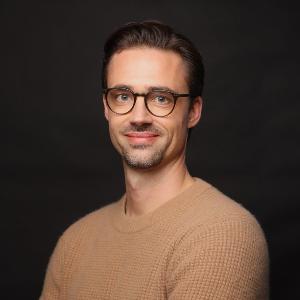DFG funding for four LMU researchers
27 Nov 2023
Physicist Jad C. Halimeh, communication scientist Benjamin Krämer and medical scientists Daniel Reichart and Florian Gärtner receive funding from the Emmy Noether and Heisenberg programs.
27 Nov 2023
Physicist Jad C. Halimeh, communication scientist Benjamin Krämer and medical scientists Daniel Reichart and Florian Gärtner receive funding from the Emmy Noether and Heisenberg programs.
Ageing hearts, migrating immune cells, quantum simulations and the use of media - the German Research Foundation (DFG) is awarding four LMU researchers through the Emmy Noether and Heisenberg programs for their research in these areas.

Dr. Daniel Reichart | © Andreas Steeger/LMU Klinikum
Dr. Daniel Reichart is a medical doctor at University of Munich Hospital and leads a research group at the Gene Center Munich. For his research on aging processes in the heart, he has now been awarded with a funding of two million euros by the German Research Foundation (DFG) through its Emmy Noether Programme.
Life expectancy has been continuously rising worldwide for decades. Currently, every second german citizen is already above the age of 45 years, while every fifth person is above 66 years old – and the trend remains upward. At the same time, age presents a significant risk of chronic conditions, particularly cardiovascular diseases. In his project “The aging heart: Identifying new biomarkers for aging and evaluating new treatment approaches,” Daniel Reichart wants to investigate the aging process of the heart and the incremental loss of cellular resilience at the molecular level. “Using single-cell sequencing, we can measure the RNA and epigenetic patterns of each individual heart cell. This will allow us to characterize the heterogeneity of cell types of the aging heart with high sensitivity,” says Reichart. These insights should deepen our understanding of people’s increased vulnerability to cardiac diseases as they age. Moreover, the findings should help to discover new treatment options and answer the question why people age at different rates.
Daniel Reichart worked as a medical doctor at the University Medical Center Hamburg-Eppendorf (UKE), before he was a postdoctoral fellow at Harvard University for three years. Since 2021, he is working as a medical doctor at University of Munich Hospital.

Dr. Jad Halimeh | © Jad Halimeh
Dr. Jad C. Halimeh is a research group leader at the Arnold Sommerfeld Center for Theoretical Physics at the Ludwig Maximilian University of Munich. He was now awarded 1.5 million euros in research funding through the German Research Council (DFG) Emmy Noether program.
His group’s research focuses on the quantum simulation of gauge theories and far-from-equilibrium quantum many-body dynamics. Using analytic and numerical tools, they develop methods to stabilize gauge theories on various quantum-simulation platforms, ranging from cold atoms to superconducting qubits. The goal is to propose the next generation of experimentally feasible reliable large-scale quantum simulators of gauge theories in higher spatial dimensions and with non-Abelian gauge groups. The purpose of this endeavor is to then utilize these quantum simulators with experimental colleagues in order to probe the rich physics of far-from-equilibrium gauge-theory dynamics that may not be accessible using classical methods. Conversely, the Halimeh group also employs analytic and numerical techniques to discover, enhance, and classify new exotic far-from-equilibrium gauge-theory dynamics that can be observed in current state-of-the-art quantum-simulation platforms.

Dr. Florian Gärtner | © PicturePeople
Dr. Florian Gärtner is a researcher at the Medical Clinic and Polyclinic I of the LMU Klinikum. He is already in receipt of European Research Council (ERC) funding for his project “MEKanics (Cell mechanics of megakaryocytes in 3D tissues – deciphering mechanobiology of platelet formation).” With a Heisenberg Professorship, the DFG is now supporting him to establish his independent laboratory in which he will address the topic entitled "Deciphering the mechanics that control cell shape and movement in living tissues - implications for cardiovascular biology".
Cardiovascular disease remains the number one cause of death worldwide, and systemic inflammation has been identified as the primary trigger. Disease progression involves the recruitment of pro-inflammatory immune cells, such as platelets and leukocytes, to diseased blood vessels, where they fuel inflammation. All immune cells are born in the bone marrow and must enter the bloodstream to travel throughout the body, monitoring the organism for signs of danger. As they travel, immune cells face numerous mechanical challenges, such as shear forces from the bloodstream or tensile and compressive forces from the tissue microenvironment they monitor. This makes their seemingly effortless movement through the body all the more astonishing and raises the fundamental question as to how these cells sense mechanical forces to control their shape and movement. “In the Heisenberg Programme, we aim to address this lack of knowledge from multiple angles, combining the disciplines of cell biology, biophysics, and medicine,” explains Gärtner. The goal is to identify novel therapeutic targets to fight cardiovascular disease.

PD Dr. Benjamin Krämer | © Jan Greune
Benjamin Krämer recently took up an appointment at LMU as Professor of Communication Studies with a particular focus on media use and media history. The German Research Foundation is funding his role as a Heisenberg Professor.
Media use can be described not only in terms of what is used (for example, which forms of media or which specific media contents) or for how long, but also how. As part of his Heisenberg professorship, Benjamin Krämer will investigate the strategies of media use. This will involve looking at questions surrounding usage styles (how we navigate our way through the media landscape), attitudes toward media contents (whether, say, we remain cool and distanced or get emotionally caught up in media stories), and the spatial and social environment for media consumption (for example, where we use media, whether we do so with others or alone, etc.).
Krämer’s goal is to carry out a closer analysis of these media strategies in their various aspects. To this end, he will start by reconstructing individual episodes of media use in detail in a series of smaller studies. In another group of smaller studies, he will then investigate individual aspects of strategies by recording usage processes (such as navigation operations on digital platforms) at a technical level. And finally, Krämer plans to investigate which strategies are used predominantly in different parts of the population according to their social status and life circumstances. In addition to studying media use strategies, Krämer also plans to research two topical subjects in the domain of political communication: the relationship between right-wing populism and media; and between conspiracy theories and media.